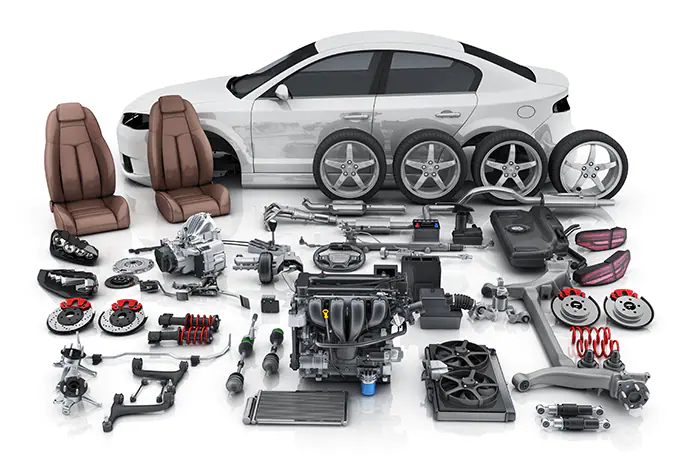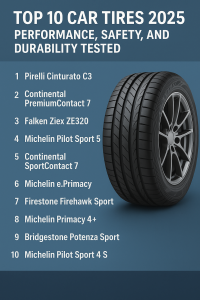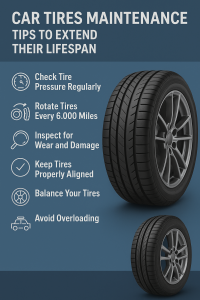Online Marketplaces for Auto Parts: The Future of Car Maintenance

Auto Parts

Online Marketplaces for Auto Parts: The Future of Car Maintenance The digitization of car care is no longer a promise — it’s happening now. Online marketplaces are reshaping how vehicle owners, mechanics, and small repair shops find the parts they need, when they need them. Faster search tools, richer product data, and competitive pricing are turning what used to be half-day trips into a few clicks, and that convenience is changing expectations about maintenance and ownership. Read More: Car Insurance 101: A Complete Guide for Beginners
Why Marketplaces Matter for Auto Parts

Marketplaces bring scale and choice in a way traditional supply chains rarely matched. Shoppers can compare brand options, fitment details, and third-party reviews in one place, which reduces guesswork and the risk of costly returns. This aggregation is especially powerful for older or specialty models where local inventories are thin — suddenly, a hard-to-find component can be sourced from a distant seller and delivered within days. Recent market analyses show the online automotive aftermarket expanding rapidly, underscoring how crucial marketplaces have become for sourcing genuine and aftermarket items. Precedence Research+1. Read More : BMW Motorcycle Innovations: What’s New for Adventure Riders in 2024
Streamlined Discovery and Trust
Search filters, VIN-matching tools, and AI-driven recommendation engines are making discovery simpler and more accurate. When a user types a problem into a marketplace, the platform can surface compatible parts, installation guides, and related accessories — turning a single purchase into a micro-lesson in car care. The transparency of ratings and seller histories also builds trust, bridging the old divide between do-it-yourselfers and professional installers. Industry reports and analyses have documented growing consumer comfort with buying parts online, indicating that digital tools are reducing friction across demographics. Scube Marketing+1
Price Competition, Better Margins for Some
Marketplaces introduce intense price competition, but they also open new margins for sellers who optimize listings and the customer experience. For consumers, that competition often means lower prices and promotions that make preventative maintenance more affordable. For independent merchants, the trade-off is learning platform economics, shipping logistics, and reviews management — but those who do can reach customers beyond their geographic footprint and scale faster than a single storefront ever could. Recent retailer sales data reflect that online channels are contributing measurable growth in parts revenues. Digital Commerce 360
Logistics and the Race to Faster Delivery

Speed matters in maintenance — a mechanic waiting on a brake pad loses billable hours. Marketplaces are investing heavily in logistics partnerships, regional fulfillment, and inventory transparency so parts can reach shops and homes quickly. Some platforms are experimenting with same-day delivery in urban corridors and next-business-day nationwide fulfillment, which changes how repair shops plan work and manage cash flow. Analysts note that these logistics improvements are a major factor driving the growth of e-commerce in the automotive aftermarket. Precedence Research+1
How Small Shops and DIYers Benefit Alike

Independent shops gain access to a broader supplier base without large purchasing contracts, letting them quote jobs more competitively and keep customers local. DIY enthusiasts benefit from the abundance of tutorials, cross-seller warranties, and community reviews that make swapping parts less intimidating. Hybrid models are emerging: marketplaces that connect local installer networks with online parts catalogs so a customer can buy the part and book a pro in one checkout flow — a convenience loop that encourages routine maintenance and increases vehicle uptime. revolutionparts.com. Read More : Cybersecurity in the Digital Age: Insights from Brilliance Hub
Quality, Counterfeits, and the Role of Verification

A chief concern is ensuring authenticity. Marketplaces are responding with stricter seller verification, clearer OEM labeling, and serialized tracking for higher-value components. Buyers are learning to look for verified seller badges, warranty language, and documented returns policies before committing to a purchase. Industry watchdogs and trade associations are also calling for better reporting tools to protect consumers and legitimate manufacturers from counterfeit risks. PYMNTS.com. Read More :Cutting-Edge New Technology Gadgets: What to Expect in 2024
Data, Predictive Maintenance, and the Next Wave

Beyond buying and selling, marketplaces are becoming data platforms. Purchase histories, failure rates, and regional trends feed predictive maintenance programs that can remind drivers to replace wear items before they fail. This convergence of commerce and analytics promises a shift from reactive repairs to proactive care — healthier vehicles, safer roads, and more predictable ownership costs. As marketplaces collect richer signals, they’ll be able to recommend bundles, subscriptions, or service appointments tailored to each vehicle’s real-world needs. Fortune Business Insights+1. Read More :Best Smartphone 2024: A Comprehensive Guide to Cutting-Edge Mobile Tech
A More Accessible Future for Auto Parts

The future of car maintenance is collaborative: platforms, shops, and drivers sharing data and inventory to keep vehicles running longer and more reliably. Online marketplaces are proving they’re not just selling parts — they’re enabling smarter decisions, unlocking economies of scale, and inspiring a new generation to take ownership of vehicle care. As these platforms mature, expect more seamless integrations between diagnostics, parts sourcing, and service, making maintenance less of a chore and more of a simple, empowering step in responsible vehicle ownership. Read More : 10 Reasons Why You Should Take a Digital Marketing Course in 2025





